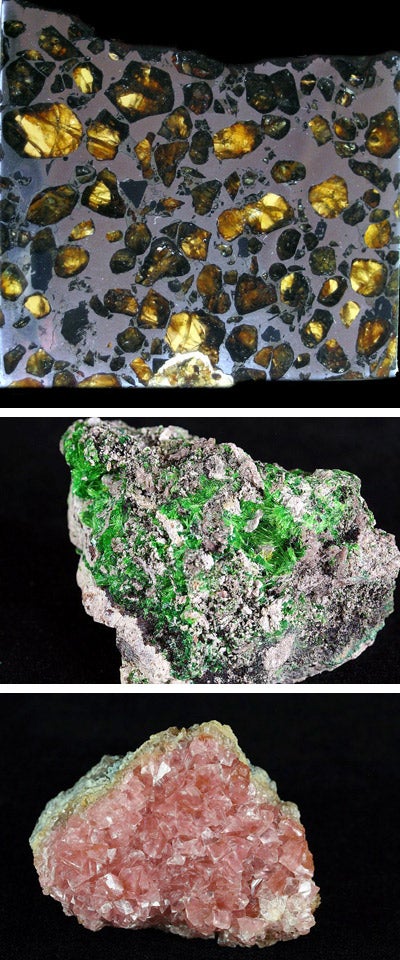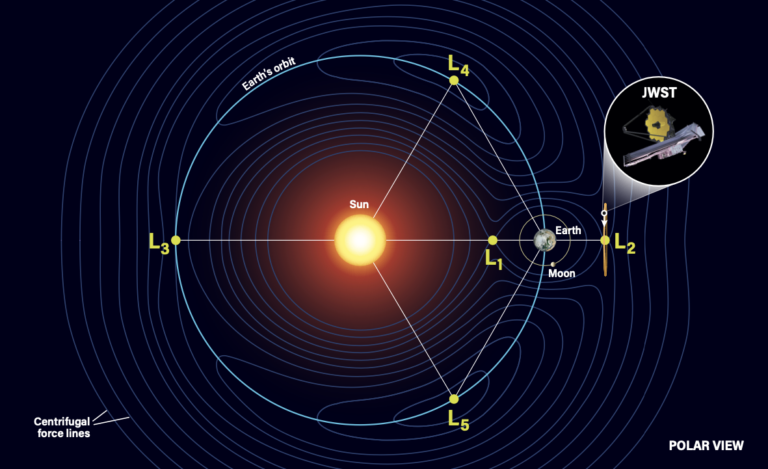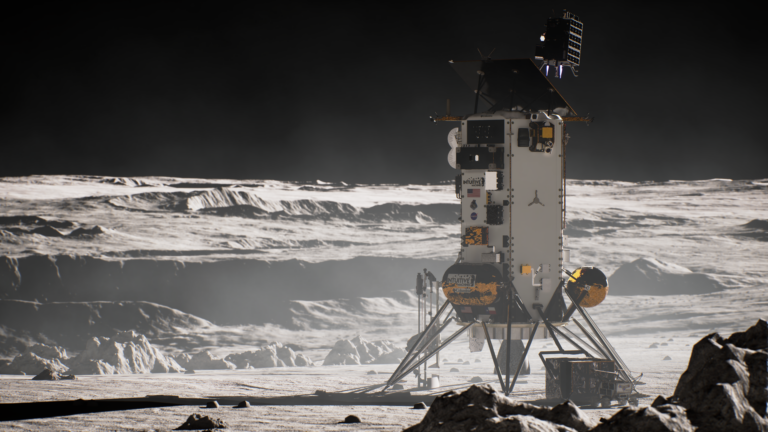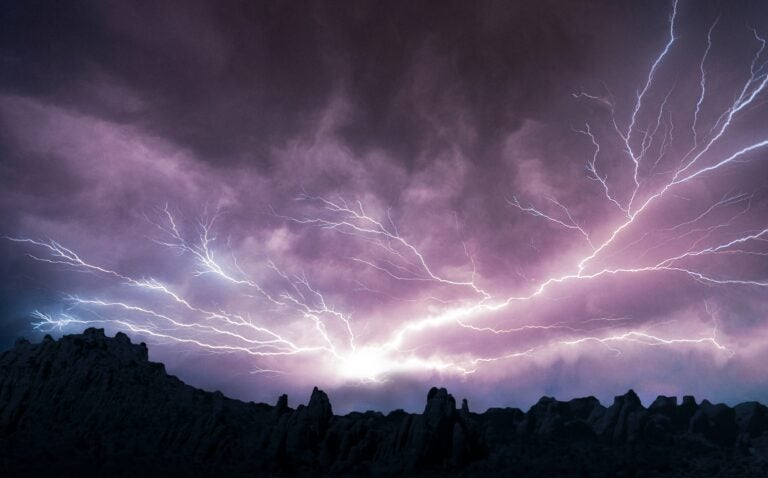A new mineral museum project is planned to commence in rural New Mexico in late 2010. The John H. Eicher Mineral Museum will be constructed at Granite Gap, a short distance north of Animas, New Mexico, 8 miles south of I-10 and 29 miles southwest of Lordsburg. The location is about 2½ hours southeast of Tucson, just over the New Mexico border. The area has become an important destination for amateur astronomers seeking dark skies from which to observe the stars.
Developer and astronomy enthusiast Gene Turner has previously created the Arizona Sky Village and Rancho Hidalgo, two communities for skygazers, near the Granite Gap site. There, amateur astronomers have purchased land and built houses to gain access to an inky black, “dream” dark sky for their telescopes. Now the Granite Gap development, which amounts to 700 acres, will offer a low-cost community and “yearlong star and rock party” for amateur astronomers and mineral collectors. The museum will be a part of the educational vision planned for many on-site and online activities.
The museum is named for John Harold Eicher (1921- ), emeritus professor of organic chemistry at Miami University, Manhattan Project scientist, and longtime mineral collector and enthusiast. Eicher’s son, David J. Eicher, is editor of Astronomy magazine, which maintains an observatory at Rancho Hidalgo and is an active partner in the educational activities planned for Granite Gap. Other partners in the project include Celestron (the world’s largest manufacturer of telescopes), the Astronomical League, and Vanderbilt University.
The Eicher Mineral Museum building will be built beside a planetarium, and both institutions will be of world-class quality. The mineral museum will contain eight galleries, including a species gallery, meteorite gallery, special/changing exhibits gallery, minerals of Arizona and New Mexico gallery, laboratory gallery (with microscopes for study), history of mining gallery, an outdoor gallery with large specimens, and a lapidary gallery that will cater to craft and jewelry projects. David Eicher will serve as director of the museum.
David Eicher and Turner have seen a growing trend of crossover interest between amateur astronomers and rock and mineral collectors, in part due to the interest in meteorites from astronomy buffs. “We see fascination from astronomy buffs not only with meteorites but also with pure minerals,” says David Eicher, “when they realize that chemistry in the universe operates on a common plane and that mineral specimens held in their hands may approximate the kinds of crystals and minerals that are scattered across planets throughout the cosmos.” Conversely, they believe many rock and mineral collectors — such as those who frequent the nearby Tucson Gem and Mineral Show —l will be fascinated, once darkness has fallen, with observing treasures of the night sky through telescopes.
Granite Gap offers access to world-class dark skies at a low cost. Science enthusiasts can lease 1/3-acre plots for their RVs for a one-time cost of $2,500, complete with water, septic, electricity, and high-speed Internet. Moreover, cabin packages, nicely furnished so-called park models, start at $12,500. Turner’s vision of bringing astronomy; mineralogy; archeology (with ancient Native American sites on the property); mining history with silver, lead, and copper, and gold mines nearby; birding; equestrian activities; and a large lake at the site for recreation will promote a new blend of educational activities.
The low cost will enable many to enjoy science recreation at the site, and a website, www.granitegap.com, will promote the educational vision. It will soon commence a significant emphasis on mineral education, highlighting in simple terms about 500 mineral species with photographs, data, and a summary explanation of each mineral for beginners and intermediate collectors, by David Eicher, who is a highly enthusiastic mineral collector.
Moreover, the bridge between astronomy and mineralogy will be further highlighted by a portion of the Granite Gap property to be called Shoemaker Discovery Park. Named for planetary geologist Eugene M. Shoemaker (1928-1997), Shoemaker Discovery Park will allow kids to explore impact geology with an enormous artificial impact crater. They will be able to dig for actual meteorite specimens that have been buried in the soil, giving them the thrill of discovery while teaching geology. The site will also host the International Amateur Spaceport, featuring large rocket launches. Those who enter the park will learn about Shoemaker’s breakthrough research on impact geology, which included essentially inventing the science with his research at Meteor Crater in Arizona. Nearby, Rancho Hidalgo contains Pluto Park, which holds Pluto discoverer Clyde Tombaugh’s (1906-1997) 16-inch telescope.
A feature article in the September 2010 issue of Astronomy, the world’s largest publication on the subject, describes the project in more detail. (Download a PDF of “A night at Granite Gap.”)
The Eicher Mineral Museum project will commence in the autumn of 2010. The organizers welcome the world of mineral enthusiasts to get involved with the museum project and seek cooperation with other museums and donations of specimens from dealers or collectors who wish to help the effort. Turner’s educational foundation, New Horizons West LLC, is a 501c(3) nonprofit entity. Helping to bring mineral collecting to a new generation of young science-minded people will be a primary goal as the project moves forward. For questions on the Granite Gap development, please contact Gene Turner at et423@aol.com, (575) 548-0065. For questions on the Eicher Mineral Museum, please contact David J. Eicher at deicher@astronomy.com, (262) 798-6603.










